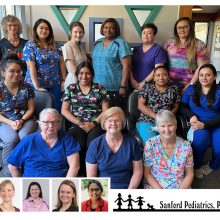Resources for Medicine
Medicine
NC AHEC has played a substantial role in the progress that has been made since 1972 in overcoming the problems of aggregate supply and geographic maldistribution of physicians in North Carolina.
In the years between 1979 and 2001 the state’s 75 non-metropolitan counties have shown greater improvement in the physician to population ratios than the comparable non-metropolitan counties in the rest of the United States.
HISTORY
In 1993, the NC General Assembly expressed its interest in expanding the pool of generalist physicians for the state and mandated that each of the state’s four schools of medicine develop plans to expand the percentage of medical school graduates choosing residency positions in primary care. The plans submitted by the four schools reflect the unique missions and the strengths of programs of each school. The plans also describe similar initiatives to increase the percentage of graduates choosing careers in primary care. Plans included curriculum changes to emphasize primary care, increased use of community practices at teaching sites, and expansion of primary care residency positions across the state to ensure residency opportunities for graduates who choose primary care specialties.
In each case, the medical school plans for new generalist community-based initiatives built upon their relationships with the NC AHEC Program. These initiatives, as part of the 1995-2001 AHEC Plan, ushered in Phase II of the AHEC Program. In Phase I, medical education was decentralized-but largely to the AHEC hospitals and to selected physicians’ offices. In Phase II, the entire educational process moved even more into the community practice setting. This trend in undergraduate education, along with the expansion of primary care residency training, has led to a dramatic increase in the supply of primary care physicians in the state.
Students enrolled in the now five medical schools in North Carolina continue to rotate through the NC AHEC regions for their community medical experiences as they have in previous years. Currently, there is a substantial portion of the curricula devoted to office-based off-campus training.
AHEC MEDICAL EDUCATION PARTNERS:
Campbell University School of Osteopathic Medicine
Duke University School of Medicine
East Carolina University School of Medicine
UNC-Chapel Hill School of Medicine
Wake Forest University School of Medicine
PRIMARY CARE RESIDENCY TRAINING (GRADUATE MEDICAL EDUCATION)
The NC AHEC Program continues to serve as the major resource for training primary care physicians for rural and underserved communities of the state. Over 1100 primary care physicians have been trained in AHEC residencies, with two-thirds remaining in NC towns to practice.
CONTINUING MEDICAL EDUCATION
The period 2001-2005 is one of considerable importance and change for continuing medical education (CME). Issues of accreditation, funding, boundaries, managed care, mandatory documentation of CME for licensure, and utilizing new educational technology are all part of the changing paradigm of CME delivery.
PHYSICIAN SUPPORT
The challenge of maintaining the intellectual and educational character of the community environment that helped attract physicians to North Carolina will be a critical factor in their retention. It will also be essential to help physicians gain access to the latest medical knowledge so that they can best serve the citizens of North Carolina. The introduction of newer methods for patient care along with advances in biotechnology, computer networks and databases, and telemedicine will make medical practice increasingly more complex. The NC AHEC Program provides an ideal network for the rapid dissemination of new information to the practitioner.





